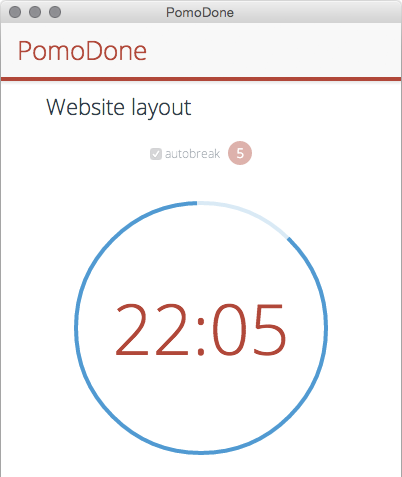Over the last few years, we've seen a major push towards remote work. The pandemic forced many companies to dive head-first into the world of remote work, and now, three years later, some businesses are maintaining hybrid or remote work structures.
Throughout this transition, businesses have struggled with unproductive remote workers. However, since remote work comes with a slew of benefits, many of those who are facing this problem are willing to coach their unproductive employees to turn the experience around.
This article will discuss how to coach unproductive employees to make them more productive when working remotely. Specifically, we'll discuss identifying the problem, setting expectations, and providing support and resources. From there, we'll wrap things up with some effective coaching techniques. Let's dive in.
1. Identify the Problem
If you don’t know the root cause of the problem, how can you fix it?
To effectively coach unproductive remote employees, you need to get to the bottom of the underlying issue. Why are your employees slacking off? Are they unhappy or stressed out? Do they lack the support they need to succeed?
Answering some of these questions can help you uncover the areas of concern. So let’s break it down into three simple steps:
- Know the signs
- Identify the cause
- Address the issue
Know the Signs
Let’s face it. As a manager, it’s much easier to keep tabs on what your employees are doing throughout the day when you’re all working in the office. For instance, with a quick glance, you can spot an empty desk from across the room.
But when people are scattered across the globe, distracted or unproductive workers are a bit less obvious. Fortunately, there are some signs you can observe to determine unproductive remote workers. These include:
- Failing to hit goals
- Missing due dates and deadlines
- Turning cameras off on all calls
- Lack of participation during calls
It may be easier to notice if an employee’s performance is slipping if they previously worked in the office. Having worked with them in person will give you a baseline of their level of productivity and efficiency.
However, if an individual has only worked remotely with your team, it may be more difficult to pick up on these small details.
Identify the Cause
Do you know what's funny about remote work? It can be both freeing and challenging at the same time. Sure, we get to work from the comfort of our own homes, but sometimes, it can lead to a dip in productivity.
Are you noticing that some employees are doing just enough to get by (also known as quiet quitting)? Or how others might unintentionally lose track of their tasks without someone looking over their shoulders?
So, what gives? The truth is, remote work isn't a perfect fit for everyone. Some folks absolutely love it and seek out job openings that specifically offer remote arrangements. While others enjoy the camaraderie and support, an in-person office provides. It really takes a special kind of discipline to thrive in a remote role.
And let's not forget burnout. Office workers aren’t the only ones experiencing this phenomenon. An October 2022 study by Microsoft showed that 50% of employees reported they were feeling burnt out even in a hybrid work arrangement.
When remote workers start to feel swamped or like they've got way too much on their plate, it's super easy to “be busy” without actually getting much done. Sigh. The ultimate damper to high productivity. And not to mention that it’s harder for remote workers to separate work from personal time, with the inability to disconnect further fueling the stress fire.
Sometimes the grass isn’t always greener with remote work. There are plenty of downsides that can impact your team’s productivity levels. The key is to conduct pulse surveys, talk to your employees, and uncover the root cause at the source before it spreads like wildfire.
Address the Issue
A huge part of solving a problem is addressing it. As a leader in your organization, recognizing the problem is just the start of solving it. Your less productive team members may not recognize their faults, so bringing the issue to light is important.
To keep morale high and maintain a positive work environment, this subject should be broached with kindness. Rather than taking an accusatory stance, begin by expressing your concerns in a way that's more of a neutral observation.
Addressing issues with specific individuals should be addressed during one-on-one sessions to keep things encouraging. You can call out the issue of unproductivity in group calls, but it's not the best idea to call out individuals in such a public setting.
2. Set Expectations
Once you've identified and expressed the problem, it's time to set expectations with your team. You can create and communicate goals and establish regular one-on-one check-ins.
Communicate Goals
Setting and communicating goals is a tried-and-true methodology to help boost employee productivity.
Gary Latham and Edwin Locke, the godfathers of goal-setting theory, discovered in the late 1960s that setting goals can increase productivity by 11–25%. But that's not all. “Big goals” lead to the best outcomes and tend to outperform "small" to "medium" goals.
But why are goals so helpful?
For starters, goals encourage specific action from employees (i.e., sales quotas). And communicating larger overarching goals can also help remind your team that their efforts contribute to a larger vision.
It shows them that you value their work and rely on their unique skills to accomplish the task. Employees love to feel appreciated. Who doesn't?

Schedule Regular Check-Ins
Set aside time daily or weekly to check in with your team and keep everyone on the same page. Regular check-in meetings give everyone the opportunity to ask questions or get feedback on their current projects.
In other words, virtual check-ins are the perfect opportunity to provide ongoing support for your team when you’re not able to pull up a chair to their desk or train them on a new topic face-to-face.
The result? Fewer bottlenecks and better accountability for tasks (more on that in a bit).
You can conduct these check-ins with a hybrid work scheduler to quickly schedule and organize virtual or in-person meetings with your staff, regardless of their location. This keeps everyone informed of the progress being made toward your mutual goals.
Put an Emphasis on Accountability
To effectively and fairly manage a team, it's important to hold everyone accountable. Teamwork makes the dream work, right?
Every team member is responsible for their share of the work. And with clear and reasonable expectations outlined from day one, every team member should be armed with the knowledge and resources they need to succeed.
Through regular check-ins (as discussed earlier), you can keep track of your KPIs and monitor progress or areas for improvement. But if you find it increasingly challenging to pull in the reins on accountability, consider adding a time-tracking app to your workflow. That way, remote workers can record their work schedules for added transparency.
You can even set specific timeframes to ensure employees clock in online within their scheduled hours. This online employees' time clock solution will save your business time and money by holding every team member accountable for their working hours and productivity within that time frame.
To encourage and enforce accountability, your team must prove their responsibility and own the results — good or bad.
Keeping your finger on the pulse of your team’s performance gives you the opportunity to step in and offer guidance when needed before things take a serious wrong turn. Remember, the key here is not to micromanage.
3. Providing Support and Resources
Managing a team is not a walk in the park. Your team members turn to you for guidance, technical assistance, and leadership. And it’s your responsibility to provide the necessary support they need to succeed in their roles.
That includes anything from being available at their beck and call, giving them access to the right tools, or encouraging them to take paid time off to rest and recharge.
Is it an easy balance? Not one bit. So let’s take a look at a few ways you can provide the right amount of support to boost productivity.
Encourage Work-Life Balance
Earlier, we discussed burnout as a main cause of unproductivity among employees. So one way you can support your employees and minimize the effects of burnout is to encourage a healthy work-life balance.
Employees seek work-life balance, with 72% of US workers agreeing that work-life balance is a very important factor when considering the quality of a job.
But it’s not just employees that benefit. Global research reveals that 85% of businesses show signs of improved productivity after offering greater flexibility to their employees. A true win-win scenario.
Sometimes it feels like we spend more time with our colleagues at work than with our families. So here are ways to encourage a better work-life balance among your team:
- Shutting the office down for monthly or quarterly burnout prevention/mental health days
- Making paid time off (PTO) accessible
- Respecting work hours and schedules
- Distributing responsibilities appropriately
- Encouraging breaks during the day
Don’t underestimate the power of flexibility and fostering a culture that values personal time outside of work. It’s a simple recipe for keeping your employees happy, which in turn will boost productivity during their working hours.
Provide Resources
Everyone has unique learning styles and working preferences. As a manager, it's your job to equip your team members with personalized training resources that cater to their individual needs.
Are they visual learners who prefer training videos over phone meetings? Or do they prefer a quick screen share demo before running through a task on their own?
Regardless of their preferences, it’s important to provide the right software tools that could boost their productivity. For example, you can leverage a timer app to help them with “heads down” work and reward them with a quick break.

Or you can encourage them to use it to track how long it takes them to do certain tasks. Then you can review the data to find any bottlenecks that are holding them back from an efficient workflow.
Remember, investing in your team's growth is an investment in your organization's overall success. But getting your employees set up with their resources is a job in and of itself. Thankfully, you can streamline this step by investing in a service that provides HR for small businesses.
That way, you can spend more meaningful one-on-one time with them and promote productivity.
Offer Incentives
Offering incentives is a great method to motivate remote employees, which is crucial for the success of any business. Some common incentives include extra vacation days, bonuses, free lunches, company swag like custom T-shirts, and gift cards.
However, it's important to remember that generic rewards may not have the same impact as gifts that are genuinely tailored to the interests of each employee.
By learning about your employees' interests, you can provide incentives demonstrating your appreciation for their hard work and respect for them.
For example, consider purchasing a gift card to their favorite coffee shop or restaurant. This personalized approach not only improves employee morale but also facilitates the development of stronger relationships between employees and management.
Effective Coaching Techniques for Unproductive Employees
The steps we discussed above will set your unproductive employees on the right track to a more productive future, but these situations often require further coaching and mentoring.
1. Use Effective Communication
Communication is the key to any relationship. And it only becomes more important when you're stepping into a mentor or coaching position. So double down on your communication style and make sure to add active listening to your checklist. At the end of the day, you should always be there for your team when they need your help. An open-door policy, if you will.
And when your employees do end up coming to you with their concerns, truly listen to what they have to say by keeping an eye on their nonverbal cues (i.e., do they look worried or stressed). Follow up with open-ended questions to get a better understanding of what's going on.
Why? Everyone wants to feel heard. So, give your team the attention (and respect) they deserve.
And don’t forget that communication is a two-way street. The more open you are with your communication, the more likely your team is to follow your lead. Ask for feedback on how you're doing as a manager by checking with your team every few weeks. Learn if there's anything you can do to help them by either automating a task or spreading the work equally across the group. Set the communication precedent, and your team will follow suit.
2. Track Progress
Earlier, we mentioned the importance of setting goals. While this is important, it doesn't mean much if you're not tracking progress.
Creating measurable milestones and key performance indicators (KPIs) makes it easy to track progress. This should be specific to the tasks that the employee is responsible for.
For example, you could track a salesperson's progress by measuring how many leads they secure or how many deals they close. Improved engagement or follower counts could gauge a social media manager's performance on posts.

3. Use Positive Reinforcement
Positive reinforcement is key when it comes to effectively coaching unproductive employees. Offering incentives is one thing, but there needs to be regular communication to let your employees know that they are improving.
Part of this is providing constructive feedback. Constructive feedback should reinforce what your employees are doing right or give them actionable advice on how to improve.
Key Takeaways
Remote work comes with many benefits for employees, so you may find it helpful to put in the work and coach employees whose productivity has taken a hit. When done effectively, stepping into this sort of mentorship role will improve the productivity and efficiency of your team.
As we discussed, the three key steps to coaching unproductive employees are identifying the problem, setting expectations, and providing ongoing support. Are you ready to make your team more productive than ever?
About the author:
Guillaume is a digital marketer focused on handling content management at Wordable. Outside of work, he enjoys his expat life in sunny Mexico, reading books, wandering around and catching the latest shows on TV.
What would you like to know, and what would be the best way to share this information with you? What are the best tips & tricks, what workaround do you use? We'd really appreciate your insight on these ones to make our integrations better, more productive, and much more efficient. Comments, tweets are always welcome.